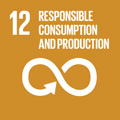- Docente: Fausto Gardini
- Credits: 6
- SSD: AGR/16
- Language: Italian
- Moduli: Fausto Gardini (Modulo 1) Giulia Tabanelli (Modulo 2)
- Teaching Mode: Traditional lectures (Modulo 1) Blended Learning (Modulo 2)
- Campus: Cesena
- Corso: Second cycle degree programme (LM) in Food Science and Technology (cod. 8531)
-
from Feb 20, 2024 to May 08, 2024
-
from Apr 10, 2024 to May 22, 2024
Learning outcomes
To give an overview of the potential application of matematical model and statistical procedures to the forecast of microbial growth in food products. To define the condition for the application of the most important mathematical models used in food industry
Course contents
Definitions, aims and development of predictive microbiology. Possible applications
Matematical models and microbial kinetics: empirical and mechanicistical models
Strategies for the acquisition of data: traditional techniques and innovative methods.
Primary models: growth microbial curves over time. Gompertz equation, Baranyi model, logistic equation. Death microbial curves: from the linear Bigelow model ti the description of non linear kinetics (loglinear models, Weibull equation and rate models for changing temperature).
Secundary models:Ratkowski equation. Experimental designs for the evaluation of the combined effects of different variables on microbial growth parameters and microbial metabolims. Polynomial equations
Tertiary models: applicative softwares for predictive microbiology and databases:: Pathogen Modelling Program, COMbase
Probabilistic models: from chi-squared to loglinear models. Logit equation.
Future perspective:supervisedand unsupervised methods
Application of predictive microbiology in food research and industry. 1. Evaluation of the effects of antimicrobials: the case of aroma compounds. Influence on the growth performance of microorganisms and on their death kinetics when associated with a thermal treatment. Advantages and critical points. 2. Study of the factors affecting biogenic amine production in foods. The case of fermented products. Experimental designs used to exploid decarboxylase activity in vitro and in vivo. 3. Spoilage of acid food. Traditional and innovative strategies to stabilize fruit based product. Evaluation of shelf life.
Readings/Bibliography
Specialistic monographies on the subject
Manuale di Microbiologia Predittiva (a cura di F. Gardini ed E.
Parente). Springer Italia 2013
Teaching methods
Lectures
Specialistic seminars
Practical training lessons
Assessment methods
The verification of the learning level consists in a final oral test based on three questions. The first argument is chosen by the student. The second argument concerns a specific topic of the course. The third question is aimed to verify the overall mindset and skills acquired by the student and the capacity to elaborate transversal connection between the topics considered. The final grade is defined by the arithmetic average of the evaluation of the three arguments.
Complete knowledge of the lesson arguments, the ability to establish critical analyses between the topics of the course and their connections and mastery in microbiological terminology will result in excellence (30-30L).
Knowledge of lesson arguments, autonomous critical approach, capacity of discussing the links between the lesson topics and correct use of terminology will result in high evaluation (25-29).
Knowledge of a limited number of lesson arguments and critical analysis not always autonomous, formally correct terminology will correspond to discrete evaluations (20-24)
Knowledge of lesson arguments limited in number and/or in contents, critical analysis not autonomous with weak knowledge of terminology will results in sufficient evaluation (18-19)
Teaching tools
File di pptx (Slides)
Office hours
See the website of Fausto Gardini
See the website of Giulia Tabanelli
SDGs

This teaching activity contributes to the achievement of the Sustainable Development Goals of the UN 2030 Agenda.
